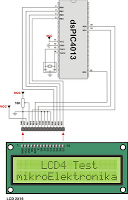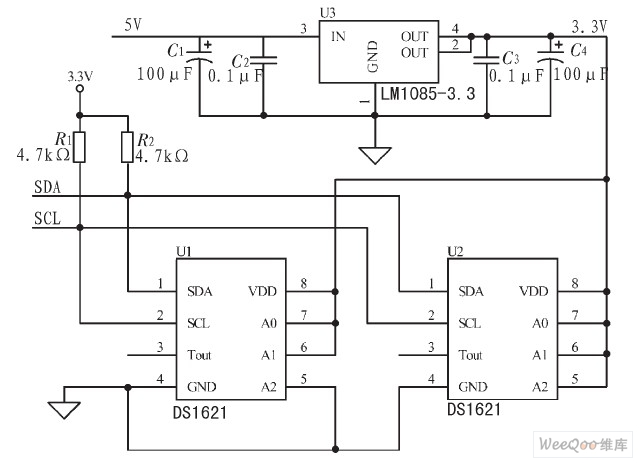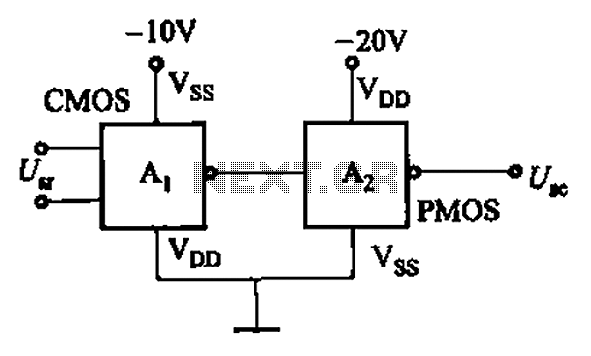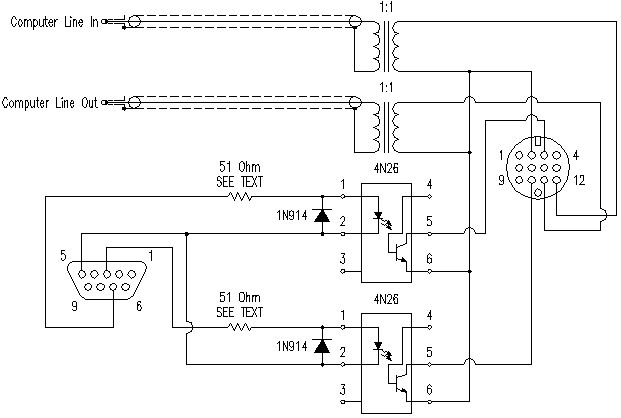
Blank Frank`s RS232 - Lowe HF-225 interface

If you have access to a Lowe HF-225 shortwave receiver, then you might be interested in this page. If you don't, then you'd probably be better off leaving now. What follows is a project I completed some time ago, which allows the Lowe HF-225 to be controlled from a PC, or other device with an available RS232 port. The Rx has an input for a remote keypad, and, consequently, was begging for me to hook my PC up to it. I don't feel the need to spell out the advantages, since you obviously understand or you wouldn't have found this page. In summary though, the combination of hardware and software presented here allows me to select frequencies using mouse clicks, configure preset frequency buttons, log significant events and scan up and down through the frequency range using predetermined step sizes and rates.
The project involves integrating the Lowe HF-225 shortwave receiver with a personal computer via an RS232 serial communication interface. This setup enables enhanced control and functionality of the receiver, making it possible to operate it remotely. The RS232 interface is a standard protocol for serial communication, which allows for the transmission of data between the receiver and the PC.
The primary components of this project include the Lowe HF-225 receiver, a PC or compatible device equipped with an RS232 port, and a software application designed to facilitate communication between the two. The software is responsible for interpreting user commands, which may involve selecting specific frequencies, configuring preset buttons for quick access to favorite channels, and logging events for future reference.
The receiver's remote keypad input serves as a means to connect external controls, allowing for the integration of a user-friendly interface. The software application can be designed to present a graphical user interface (GUI) that enables users to click on frequency selections, thereby simplifying the operation process. Additionally, the application can implement features such as frequency scanning, where the user can set predetermined step sizes and rates for navigating through the frequency spectrum.
To ensure reliable communication, proper configuration of the RS232 settings is essential. This includes setting the correct baud rate, data bits, stop bits, and parity settings to match the specifications of the Lowe HF-225 receiver. The successful implementation of this project not only enhances the functionality of the receiver but also provides an intuitive method for users to interact with shortwave radio frequencies efficiently.If you have access to a Lowe HF-225 shortwave receiver, then you might be interested in this page. If you don`t, then you`d probably be better off leaving now. What follows is a project I completed some time ago, which allows the Lowe HF-225 to be controlled from a PC, or other device with an available RS232 port. The Rx has an input for a remote keypad, and, consequently, was begging for me to hook my PC up to it.
I don`t feel the need to spell out the advantages, since you obviously understand or you wouldn`t have found this page. In summary though, the combination of hardware and software presented here allows me to select frequencies using mouse clicks, configure preset frequency buttons , log significant events and scan up and down through the frequency range using predetermined step sizes and rates.
🔗 External reference
The project involves integrating the Lowe HF-225 shortwave receiver with a personal computer via an RS232 serial communication interface. This setup enables enhanced control and functionality of the receiver, making it possible to operate it remotely. The RS232 interface is a standard protocol for serial communication, which allows for the transmission of data between the receiver and the PC.
The primary components of this project include the Lowe HF-225 receiver, a PC or compatible device equipped with an RS232 port, and a software application designed to facilitate communication between the two. The software is responsible for interpreting user commands, which may involve selecting specific frequencies, configuring preset buttons for quick access to favorite channels, and logging events for future reference.
The receiver's remote keypad input serves as a means to connect external controls, allowing for the integration of a user-friendly interface. The software application can be designed to present a graphical user interface (GUI) that enables users to click on frequency selections, thereby simplifying the operation process. Additionally, the application can implement features such as frequency scanning, where the user can set predetermined step sizes and rates for navigating through the frequency spectrum.
To ensure reliable communication, proper configuration of the RS232 settings is essential. This includes setting the correct baud rate, data bits, stop bits, and parity settings to match the specifications of the Lowe HF-225 receiver. The successful implementation of this project not only enhances the functionality of the receiver but also provides an intuitive method for users to interact with shortwave radio frequencies efficiently.If you have access to a Lowe HF-225 shortwave receiver, then you might be interested in this page. If you don`t, then you`d probably be better off leaving now. What follows is a project I completed some time ago, which allows the Lowe HF-225 to be controlled from a PC, or other device with an available RS232 port. The Rx has an input for a remote keypad, and, consequently, was begging for me to hook my PC up to it.
I don`t feel the need to spell out the advantages, since you obviously understand or you wouldn`t have found this page. In summary though, the combination of hardware and software presented here allows me to select frequencies using mouse clicks, configure preset frequency buttons , log significant events and scan up and down through the frequency range using predetermined step sizes and rates.
🔗 External reference





